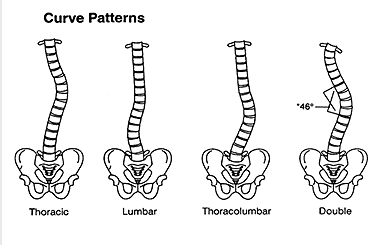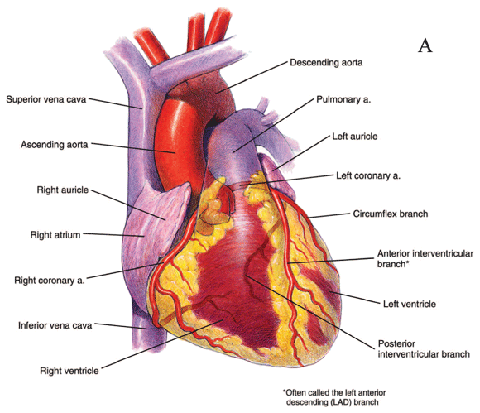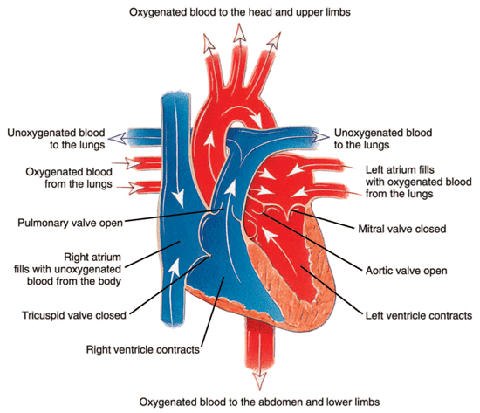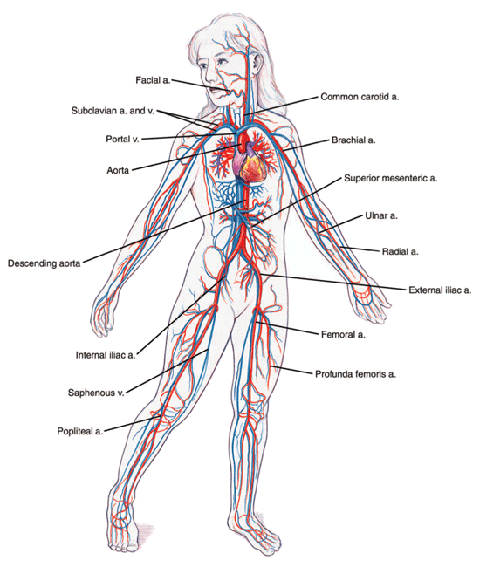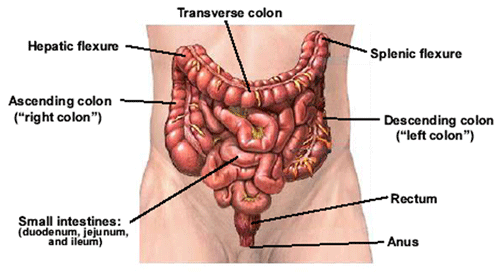Can I Get Social Security Disability Benefits for Anxiety, Phobias, Panic Attacks, Obsessive Compulsive Disorder (OCD), or Post-Traumatic Stress Disorder (PTSD)?
- How Does the Social Security Administration Decide if I Qualify for Disability Benefits for an Anxiety Disorder?
- About Anxiety Disorders and Disability
- Winning Social Security Disability Benefits for an Anxiety Disorder by Meeting a Listing
- Residual Functional Capacity Assessment for Anxiety Disorders
- Getting Your Doctor’s Medical Opinion About What You Can Still Do
How Does the Social Security Administration Decide if I Qualify for Disability Benefits for an Anxiety Disorder?
If you have an anxiety disorder, Social Security disability benefits may be available. To determine whether you are disabled by your anxiety disorder, Social Security Administration first considers whether it is severe enough to meet or equal a listing at Step 3 of the Sequential Evaluation Process. See Winning Social Security Disability Benefits for Anxiety Disorders by Meeting a Listing. If you meet or equal a listing because of your anxiety, you are considered disabled. If your anxiety disorder is not severe enough to equal or meet a listing, Social Security Administration must assess your residual functional capacity (RFC) (the work you can still do, despite the anxiety disorder), to determine whether you qualify for disability benefits at Step 4 and Step 5 Sequential Evaluation Process. See
Residual Functional Capacity Assessment for Anxiety
.
About Anxiety Disorders and Disability
What Are Anxiety Disorders?
Anxiety is fear associated with the expectation of being physically or mentally injured by some real or imagined danger. Anxiety disorders include:
- Generalized anxiety disorder;
- Various phobic disorders (simple phobia, social phobia, agoraphobia)
- Panic disorder
- Obsessive compulsive disorder (OCD)
- Post-traumatic stress disorder (PTSD)
Anxiety is common in the U.S., as evidenced by the literally tons of tranquilizers given yearly in legal prescription drugs. Probably the most frequent mental disability allegation is “nerves,” by which the claimant means anxiety.
Information from Family and Friends Is Crucial to Disability Determination
Claimants with mental disorders living with family members are most likely to be improperly denied by Social Security Administration adjudicators. It is critically important for family members or other caregivers to provide the Social Security Administration with as detailed information as possible about specific tasks you can or cannot do.
Mental health clinics will often refuse to provide the Social Security Administration with clinical records that are useful in evaluating how a mental disorder has developed over time. They might simply write a letter summarizing what they think they Social Security Administration needs to know. In some instances, the Social Security Administration is forced to fall back on purchasing a consultative mental status examination in which the examining psychiatrist or psychologist has limited time to determine the details of daily functional capacity. The Social Security Administration should ask the treating psychiatrist (or psychologist) about work-related abilities for at least unskilled work and how these conclusions match with the corresponding limiting mental symptom.
If you are receiving medication, information about side-effects must come from a medical doctor, because a psychologist is not competent to evaluate that matter. However, it is also important for the same kind of information and opinions to be obtained from family or other caregivers, to make sure that nothing is missed. The caregivers live with the claimant; they may have noticed important facts that can be brought to the attention of the treating psychiatrist and the Social Security Administration.
Winning Social Security Disability Benefits for an Anxiety Disorder by Meeting a Listing
To determine whether you are disabled at Step 3of the Sequential Evaluation Process, the Social Security Administration will consider whether your anxiety disorder is severe enough to meet or equal the anxiety-related disorders listing. The Social Security Administration has developed rules called Listing of Impairmentsfor most common impairments. The listing for a particular impairment describes a degree of severity that Social Security Administration presumes would prevent a person from performing substantial work. If your anxiety disorder is severe enough to meet or equal the listing, you will be considered disabled. But anxiety is rarely incapacitating at listing-level severity.
The listing for anxiety disorders is 12.03. This listing applies when either (1) anxiety is the predominant disturbance or (2) anxiety is experienced if you attempt to master symptoms, for example, confronting the dreaded object or situation in a phobic disorder or resisting the obsessions or compulsions in obsessive compulsive disorders.
The listing has 3 parts: A, B, and C. To meet the listing, you must satisfy both parts A and B or both parts A and C.
Meeting Social Security Administration Listing 12.06A for Anxiety Disorders
To meet listing 12.06A you must have medically documented findings of at least one of the following:
1. Generalized persistent anxiety accompanied by three out of four of the following signs or symptoms:
a. Motor tension; or
b. Autonomic hyperactivity; or
c. Apprehensive expectation; or
d. Vigilance and scanning; or
2. A persistent irrational fear of a specific object, activity, or situation which results in a compelling desire to avoid the dreaded object, activity, or situation; or
3. Recurrent severe panic attacks manifested by a sudden unpredictable onset of intense apprehension, fear, terror and sense of impending doom occurring on the average of at least once a week; or
4. Recurrent obsessions or compulsions which are a source of marked distress; or
5. Recurrent and intrusive recollections of a traumatic experience, which are a source of marked distress.
Part A.1 Generalized Anxiety Disorder
Part A.1 deals with generalized anxiety disorder, which is a common mental disorder. It rarely produces more than mild impairment in functioning, but there are exceptions. Any three of the criteria Part A.1.a through d must be fulfilled.
- Part A.1.a deals with “motor tension.” This refers to the observable physical expression of anxiety, e.g., restlessness, jumpiness, trembling, fidgeting, strained appearance to the face, and the feeling that one is “uptight” and cannot relax. Such a person appears “nervous.”
- Part A.1.b deals with “autonomic hyperactivity.” Autonomic functions are those automatic functions carried out by the body that are not usually under conscious control. In anxiety there is increased activation of the sympathetic nervous system, preparing the body for impending physical stress. This reaction is normal if a person faces a serious threat that calls for a decision to “fight or run.” But in inappropriate anxiety, autonomic arousal exceeds the real degree of threat. Hormones are released (epinephrine and norepinephrine from the adrenal glands) which increase the rate and force of heartbeat, and raise the blood pressure. The mouth may feel dry and the stomach queasy. There is increased sweating (“clammy hands”) and faster breathing. A sustained condition of sympathetic autonomic arousal is not healthy for the body, and not comfortable for the person experiencing it. In fact, studies have demonstrated that cortisol released during stress impairs memory and other cognitive functions by adverse effect on the hippocampus in the brain. Chronic stress may permanently injure the brain, although this is not a theory that can easily be tested.
- Part A.1.c deals with “apprehensive expectation.” This state involves a preoccupation with possible negative events, either for oneself or others. Such a person worries excessively and is in continuous anticipation of something going wrong without any significant indication of a realistic threat, i.e., it is a continuous state of fear.
- Part A.1.d deals with “vigilance and scanning,” which are a result of apprehensive expectation. The environment is scanned with hyper-attentiveness, so that threats cannot approach unseen. This state would be appropriate for a soldier moving through the jungle looking for booby traps, but not when the threat is unreal. If a threat cannot be selectively and realistically identified, then there is the possibility it may approach anywhere at any time. Such a person constantly feels “on edge,” irritable, distractible, and has sleep disturbance which provides inadequate rest.
Part A.2 Phobias
Part A.2 deals with phobias, and defines phobia as, “A persistent irrational fear of a specific object, activity, or situation which results in a compelling desire to avoid the dreaded object, activity, or situation.” The word “irrational” is important. Realistic fears of things that can produce harm are not phobias.
Agoraphobia may be an irrational fear of being alone, or fear of being away from home in some public place. The individual does not feel “safe” and fear of being in crowds is one of the most common forms. Severe agoraphobia understandably produces marked restriction of activities and interests to those that can be performed in the home, though the condition may wax and wane in severity. Marked agoraphobia is the most frequent type of phobia qualifying under part A.2.
A person with social phobia has an irrational fear of social situations, manifested by desire to avoid circumstances in which interaction with other people is possible. The person fears being perceived as in some way inferior with consequent humiliation or embarrassment, and, as a consequence, avoids social situations. The disorder is uncommon and usually not incapacitating. An example might be an extreme fear of public speaking. If the disorder causes fear of a large number of possible social situations, then severe functional impairment would result.
With simple phobia or specific phobia, the person has a highly specific fear. Examples might be fear of heights, closed places, or certain animals. The degree of functional loss depends on how easy it is to avoid the phobic object. If a person feared volcanoes, it would not be difficult to avoid them. On the other hand, fear of airplanes or automobiles might have more serious functional consequences. Most simple phobias are not very limiting functionally, because the dreaded object can be easily avoided.
Part A.3 Panic Disorder
Part A.3 deals with panic disorder. Panic disorder is characterized by the sudden, usually unpredictable, and very intense feeling of anxiety, fear, terror or impending doom. Accompanying effects are autonomic sympathetic arousal associated with anxiety and fear, such as sweating, palpitations, and trembling. Attacks usually only last a few minutes, and in some cases may play a role in the development of agoraphobia. The disorder is common, but not functionally incapacitating unless the individual suffers from unusually frequent or prolonged attacks.
Part A.3 requires an attack frequency of at least once a week on the average. If you have a panic disorder and are considering filing for disability benefits, it would be helpful to your claim to keep a detailed diary of your attacks and make sure that your treating physician has that information documented in medical records.
Part A.4 Obsessive Compulsive Disorder (OCD)
Part A.4 deals with obsessive compulsive disorder (OCD). Obsessions are persistent thoughts or ideas that enter the mind involuntarily, and are considered as either meaningless or repulsive to the person’s viewpoint. The most frequent obsessive thoughts involve violence, fear of contamination (especially the hands), and doubt (repeatedly wondering if some action was performed [such as locking a door], or whether some event took place).
Compulsions are repetitive behaviors, done either by some set of rules or always done in the same way. Although the compulsive behavior may appear to have purpose in and of itself, that is not the reason for its performance. Rather, the purpose of compulsion is to relieve the discomfort of obsession by either creating or preventing some future event. For example, in compulsive hand washing there is rational meaning in keeping the hands clean. But it is not rational if done excessively and/or to keep airplanes flying. Counting is a common form of compulsion, e.g., a person always feels compelled to count the lines on a sidewalk. Repeated checking and touching of things are also common forms of compulsion, as well as praying.
Attempts to resist a compulsion result in increased anxiety that is temporarily relieved if the person yields to the compulsion. Eventually, the person may give up attempts at resistance to prevent anxiety, though the compulsive activity itself may not be pleasurable. Activities such as “compulsive gambling” are not compulsions in the above sense, as the participant derives pleasure from such action, and seeks it out specifically as a source of satisfaction.
Functional incapacitation from obsessive compulsive disorder is not common, but it is a serious disorder and some cases qualify under part A.4. However, no cure is available and stopping medication will result in a relapse rate exceeding 90%. Onset of OCD is usually in the 20s or 30s with some degree of familial predisposition, and equally affecting men and women. Current drug and other therapies do not result in a complete relief of symptoms, although there is often substantial improvement. The disorder is associated both with abnormal brain chemistry and with abnormal anatomical circuits involving the frontal lobes, basal ganglia, and probably other structures. Over half of individuals with OCD have a second mental disorder.
The Social Security Administration should not assume that a newly diagnosed case of OCD will respond to medication. A decision should either be favorable or deferred until treatment response can be evaluated.
Part A.5 Post-Traumatic Stress Disorder (PTSD)
Part A.5 deals with post-traumatic stress disorder (PTSD). Part A.5 defines PTSD briefly as, “recurrent and intrusive recollections of a traumatic experience, which are a source of marked distress.” The traumatic experience is one that realistically could cause substantial psychological stress on most people. Examples are events like war, torture, concentration camp experience, natural disasters, or grievous physical injury in an accident. Less devastating events such as divorce or failure in a business would not qualify as precipitating events.
Physical surroundings similar to those of the traumatic event may trigger painful recollections, or they may come in the form of dreams and nightmares. Accompanying anxiety and depression are frequently present, as well as a feeling of emotional “numbness” or sense of being detached from others that impairs interpersonal relationships (especially in emotional responsiveness), and blunts interests in activities previously considered pleasurable or worthwhile. The disorder may be acute or chronic, and any degree of severity. Those cases severe enough to qualify under the listing tend to be well-documented with substantial medical evidence available to the Social Security Administration for review.
Meeting Social Security Administration Listing 12.06B for Anxiety Disorders
To meet part B of the anxiety disorders listing, you must satisfy the requirements of part A and, as a result of those impairments have at least two of the following:
1. Marked restriction of activities of daily living; or
2. Marked difficulties in maintaining social functioning; or
3. Marked difficulties in maintaining concentration, persistence, or pace; or
4. Repeated episodes of decompensation, each of extended duration.
Information Needed To Assess Part B
Here is what Social Security Administration says about the information needed to assess whether part B of the listing is met:
Assessment of Severity
: We measure severity according to the functional limitations imposed by your medically determinable mental impairment(s). We assess functional limitations using the four criteria in paragraph B of the listings: activities of daily living; social functioning; concentration, persistence, or pace; and episodes of decompensation. Where we use “marked” as a standard for measuring the degree of limitation, it means more than moderate but less than extreme. A marked limitation may arise when several activities or functions are impaired, or even when only one is impaired, as long as the degree of limitation is such as to interfere seriously with your ability to function independently, appropriately, effectively, and on a sustained basis. See §§404.1520a and 416.920a.
1. Activities of daily living
include adaptive activities such as cleaning, shopping, cooking, taking public transportation, paying bills, maintaining a residence, caring appropriately for your grooming and hygiene, using telephones and directories, and using a post office. In the context of your overall situation, we assess the quality of these activities by their independence, appropriateness, effectiveness, and sustainability. We will determine the extent to which you are capable of initiating and participating in activities independent of supervision or direction.
We do not define “marked” by a specific number of activities of daily living in which functioning is impaired, but by the nature and overall degree of interference with function. For example, if you do a wide range of activities of daily living, we may still find that you have a marked limitation in your daily activities if you have serious difficulty performing them without direct supervision, or in a suitable manner, or on a consistent, useful, routine basis, or without undue interruptions or distractions.
2. Social functioning
refers to your capacity to interact independently, appropriately, effectively, and on a sustained basis with other individuals. Social functioning includes the ability to get along with others, such as family members, friends, neighbors, grocery clerks, landlords, or bus drivers. You may demonstrate impaired social functioning by, for example, a history of altercations, evictions, firings, fear of strangers, avoidance of interpersonal relationships, or social isolation. You may exhibit strength in social functioning by such things as your ability to initiate social contacts with others, communicate clearly with others, or interact and actively participate in group activities. We also need to consider cooperative behaviors, consideration for others, awareness of others’ feelings, and social maturity. Social functioning in work situations may involve interactions with the public, responding appropriately to persons in authority (e.g., supervisors), or cooperative behaviors involving coworkers.
We do not define “marked” by a specific number of different behaviors in which social functioning is impaired, but by the nature and overall degree of interference with function. For example, if you are highly antagonistic, uncooperative, or hostile but are tolerated by local storekeepers, we may nevertheless find that you have a marked limitation in social functioning because that behavior is not acceptable in other social contexts.
3. Concentration, persistence and pace
refer to the ability to sustain focused attention and concentration long enough to permit the timely and appropriate completion of tasks commonly found in work settings. Limitations in concentration, persistence, or pace are best observed in work settings, but may also be reflected by limitations in other settings. In addition, major limitations in this area can often be assessed through clinical examination or psychological testing. Wherever possible, however, a mental status examination or psychological test data should be supplemented by other available evidence.
On mental status examinations, concentration is assessed by tasks such as having you subtract serial sevens or serial threes from 100. In psychological tests of intelligence or memory, concentration is assessed through tasks requiring short-term memory or through tasks that must be completed within established time limits.
In work evaluations, concentration, persistence, or pace is assessed by testing your ability to sustain work using appropriate production standards, in either real or simulated work tasks (e.g., filing index cards, locating telephone numbers, or disassembling and reassembling objects). Strengths and weaknesses in areas of concentration and attention can be discussed in terms of your ability to work at a consistent pace for acceptable periods of time and until a task is completed, and your ability to repeat sequences of action to achieve a goal or an objective.
We must exercise great care in reaching conclusions about your ability or inability to complete tasks under the stresses of employment during a normal workday or workweek based on a time-limited mental status examination or psychological testing by a clinician, or based on your ability to complete tasks in other settings that are less demanding, highly structured, or more supportive. We must assess your ability to complete tasks by evaluating all the evidence, with an emphasis on how independently, appropriately, and effectively you are able to complete tasks on a sustained basis.
We do not define “marked” by a specific number of tasks that you are unable to complete, but by the nature and overall degree of interference with function. You may be able to sustain attention and persist at simple tasks but may still have difficulty with complicated tasks. Deficiencies that are apparent only in performing complex procedures or tasks would not satisfy the intent of this paragraph B criterion. However, if you can complete many simple tasks, we may nevertheless find that you have a marked limitation in concentration, persistence, or pace if you cannot complete these tasks without extra supervision or assistance, or in accordance with quality and accuracy standards, or at a consistent pace without an unreasonable number and length of rest periods, or without undue interruptions or distractions.
4. Episodes of decompensation
are exacerbations or temporary increases in symptoms or signs accompanied by a loss of adaptive functioning, as manifested by difficulties in performing activities of daily living, maintaining social relationships, or maintaining concentration, persistence, or pace. Episodes of decompensation may be demonstrated by an exacerbation in symptoms or signs that would ordinarily require increased treatment or a less stressful situation (or a combination of the two). Episodes of decompensation may be inferred from medical records showing significant alteration in medication; or documentation of the need for a more structured psychological support system (e.g., hospitalizations, placement in a halfway house, or a highly structured and directing household); or other relevant information in the record about the existence, severity, and duration of the episode.
The term repeated episodes of decompensation, each of extended durationin these listings means three episodes within 1 year, or an average of once every 4 months, each lasting for at least 2 weeks. If you have experienced more frequent episodes of shorter duration or less frequent episodes of longer duration, we must use judgment to determine if the duration and functional effects of the episodes are of equal severity and may be used to substitute for the listed finding in a determination of equivalence.
Providing the Social Security Administration With Adequate Information
It is not easy for the Social Security Administration adjudicator to obtain quality, detailed information for use in part B of the listing. Treating psychiatrists often will not provide actual treatment records and when they do, the records often lack the detail needed to make an accurate determination regarding daily activities, social functioning, or concentration, persistence or pace. Medical records are more likely to document part B.4, because treatment notes or hospitalization records will record a change in the claimant’s condition.
The best evidence of functional ability comes from the claimant’s family or other caregivers, because they actually observe the claimant’s limitations and abilities, unlike the treating doctor. The doctor often merely guesses based on the claimant’s clinical condition.
Most psychiatrists and psychologists have only a general knowledge of their patient’s functional activities. But the treating doctor’s answers to questions about functional limitations may not always help the claimant. For example the doctor may be asked whether a claimant is limited in ability to perform a particular activity like take public transportation. If the doctor answers “Not that I know of,” this answer indicates ignorance and should not be taken as evidence of ability. But if the doctor answers, “I know of no mental limitation that would restrict the claimant’s ability to take public transportation,” then that informs Social Security Administration that the doctor thinks the claimant has the ability, even though the doctor may have no direct information to that effect.
Often, the Social Security Administration adjudicator will try to use daily activity, social information, etc., from a mental status consultative examination. This information often lacks enough detail for good disability determination.
It is important for the adjudicator to try to obtain a detailed specific description of daily activities, social functioning, task completion (concentration, persistence, or pace) and the circumstances surrounding episodes of decompensation. This means documentation of as many specific examples as possible; generalizations such as “He cannot do anything” are worthless. The daily activity forms that claimants or their caregivers complete are rarely specific enough to be of much use. To get high-quality information, the adjudicator must often contact the claimant or caregivers. This is a grueling, time-consuming job that requires an hour or more of communication. Furthermore, disability examiners have no skills in psychiatric interviewing even when they do attempt to get detailed information regarding part B, so that is an additional source of error. Therefore, inadequate development of part B information by the Social Security Administration in mental disorder claims is a weak spot and one reason a claimant may be denied disability benefits.
Meeting Social Security Administration Listing 12.03C for Anxiety Disorders
If you meet part A of the listing, but do not meet part B of the listing, you will be disabled if you meet part C. Part C requires that the impairments in part A result in your complete inability to function independently outside the area of your home.
Part C concerns functional severity and recognizes the incapacitation of claimants who can function inside their homes, but who suffer severe anxiety outside the home. This limitation is incompatible with the ability to perform job functions. You can qualify under part C even though you have fairly normal interests and activities within the structured and less anxiety-provoking home environment. The medical evidence needed is a description of the anxiety provoked when attempts are made to leave the home, as well as the nature and manner in which symptoms inhibit activities outside the home (such as shopping or visiting friends). Note that the listing requires complete inability to function independently outside the area of one’s home. This means you would not only suffer inhibiting anxiety outside the home, but as a result of that anxiety require help in any activities that were performed outside the home. The claimants most often qualifying under part C are those with agoraphobia.
Continue to Residual Functional Capacity Assessment for Anxiety Disorders.
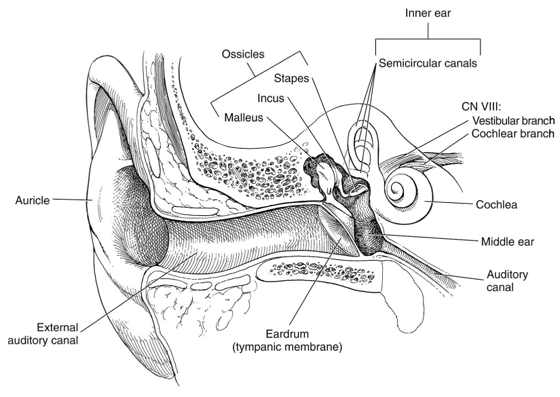

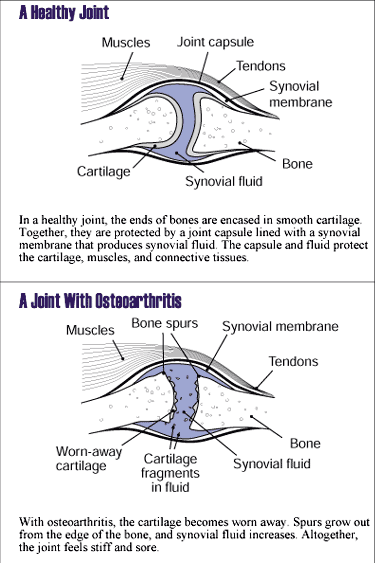
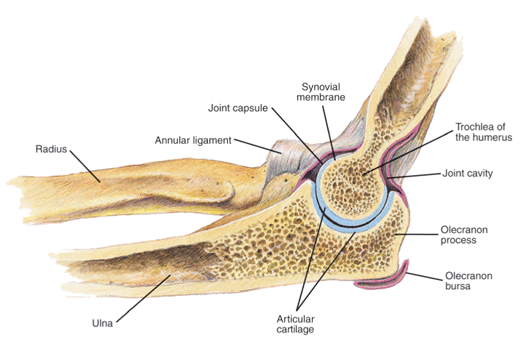
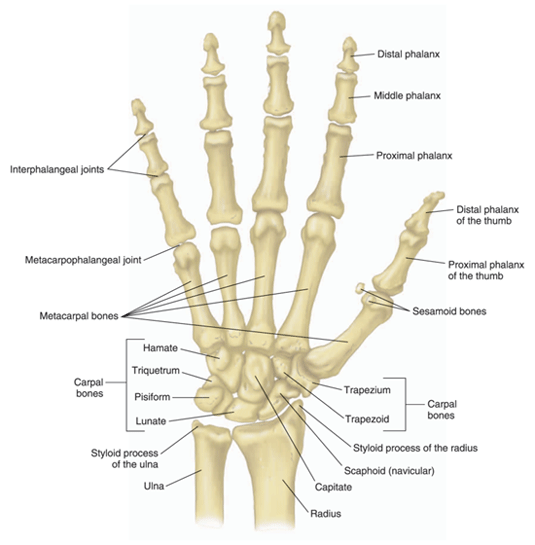
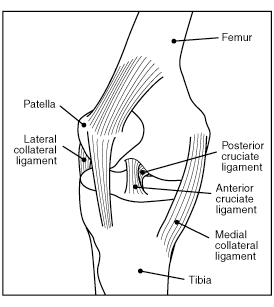
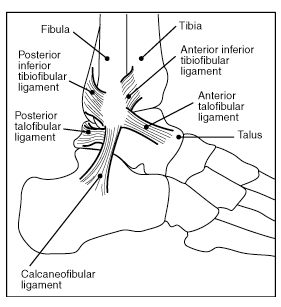
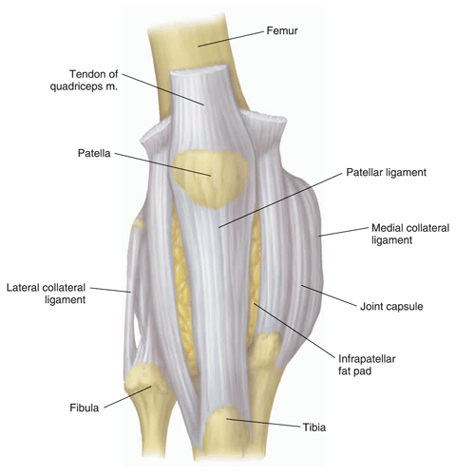
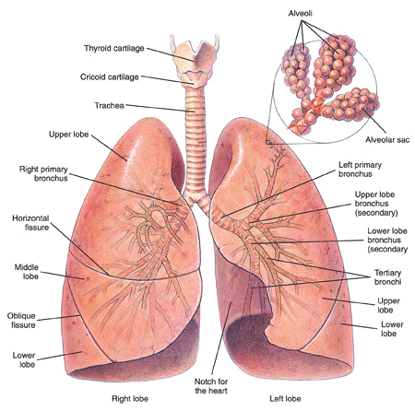
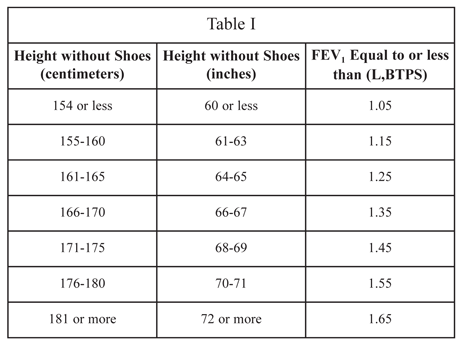
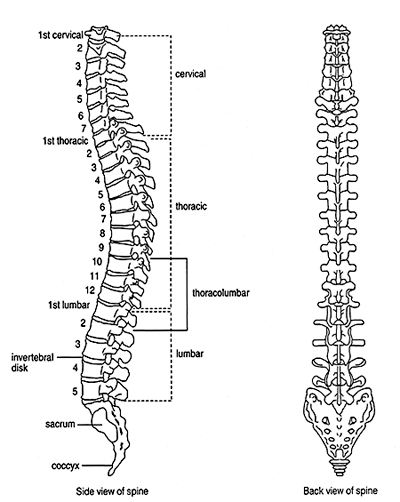


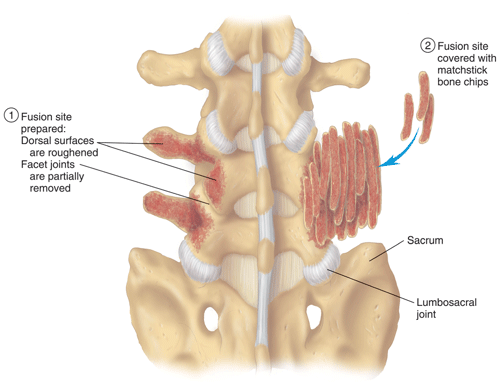
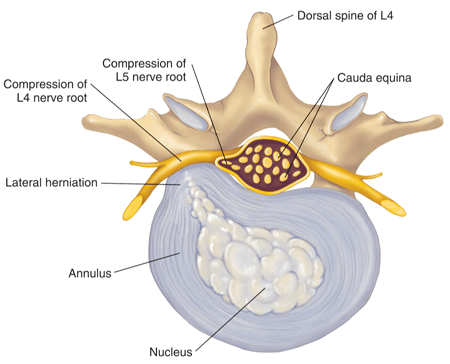
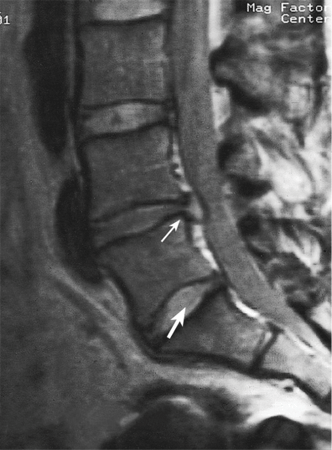
 Figure 7: Spinal stenosis with a narrowing of the spinal canal.
Figure 7: Spinal stenosis with a narrowing of the spinal canal. Figure 8: Spinal stenosis caused by a herniated disk and osteoarthritis.
Figure 8: Spinal stenosis caused by a herniated disk and osteoarthritis.